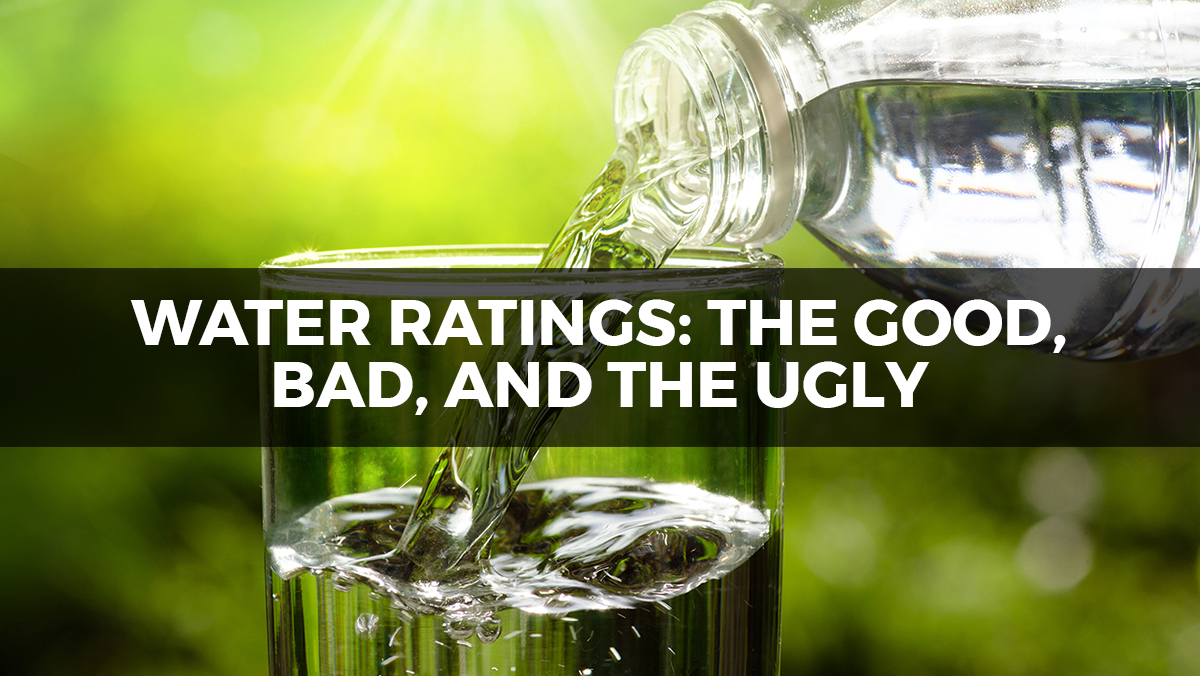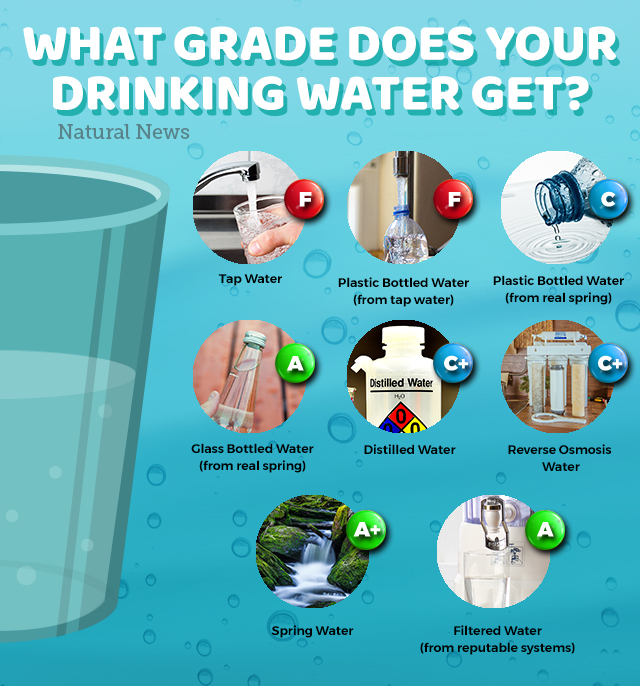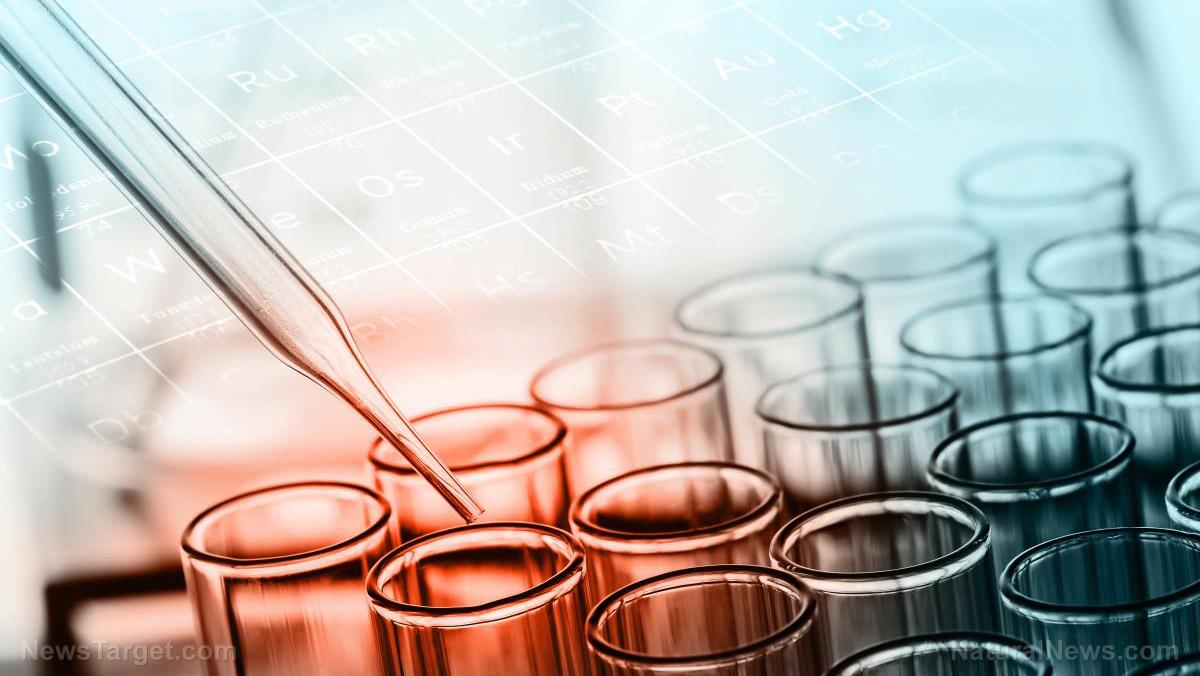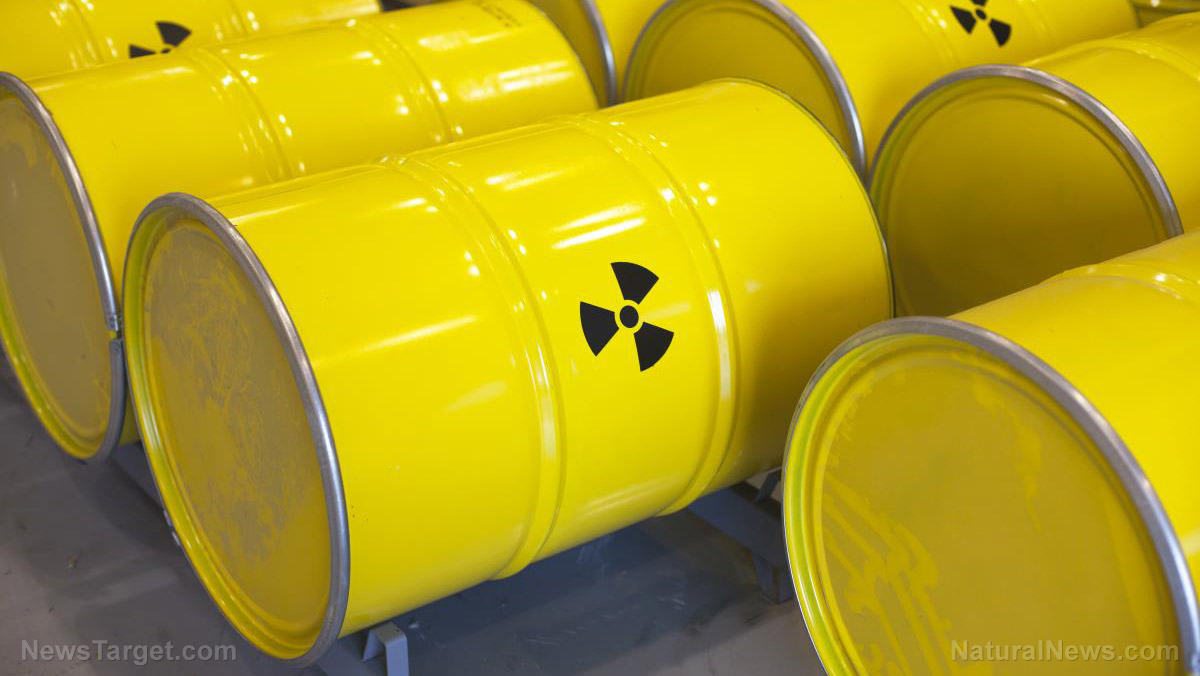Water sources compared: Tap, bottled, filtered, spring water, reverse osmosis and more
10/19/2017 / By Derek Henry

Are you a water snob? Given the state of water options today and their negative impact on the body, it may be a good idea to become a bit more discerning about the source of your drinking water.
Sure, your city, region, or municipality may have assured you that your drinking water is clean and fit for consumption and they may whole-heartedly believe that, but let’s face it, they are not exactly experts in how their “clean” water affects the vitality of the human body. In fact, most of them probably have NO idea that your body is estimated to be made up of 70 percent water, and physiological functions absolutely rely on pure water for proper function (including your brain).
So, it’s not exactly something you want to screw up. Yet millions are doing so everyday in North America, to the detriment of their body and brain.
Let’s nip that in the bud now. Here is the good, the bad, and the ugly (in reverse order) of water sources today.
Tap water
Hopefully by this point you have discovered that the public water supply is the farthest thing from healthy drinking water. Fraught with various toxins and contaminants like fluoride, chlorine, heavy metals (lead, mercury, aluminum), medication residue, insecticides, herbicides, and PFASs (Poly- and Perfluoroalkyl Substances from industrial sites), this water systematically destroys your body and brain.
These contaminants can result in lowered IQ, thyroid issues, behavioral problems, fatigue, weakness, increased cavities, bone fractures, and allergies just to name a few.
Not only is this water heavily contaminated, it is also “dead” water, meaning there are virtually no minerals left in it.

This is why tap water gets a big fat F rating and would be considered part of the “ugly” category.
Plastic bottled water
Bottled water took off as we became more aware of the importance of hydrating ourselves regularly, and didn’t want the inconvenience of carrying our own supply. However, like most man-made projects, there is a sinister component that does not make this a reliable option.
First of all, many popular brands of bottled water have been found to actually get their water from public or municipal water sources, which automatically puts those brands in the tap water category. Secondly, due to poorly cured plastics being used to fill these bottles with municipal tap water, you end up with another formidable toxin, xenoestrogens, which are known to artificially raise estrogen levels which can eventually lead to fibroids, ovarian cysts, endometriosis, and some cancers.
As a result of these toxins, the pH of these plastic bottled waters come in quite acidic (6-6.5) states. When sourcing good water, the pH should be between approximately 7.2 – 8.5 pH. High quality bottled waters (often in glass) taken from natural springs are usually within these values and can be considered quality sources. Be careful though – labeling is tricky and many claim it’s “spring water” when it really isn’t. To get an example of a bottled water that is truly sourced from springs, check out Poland Springs water.
For the majority of the plastic bottled waters containing tap water and swimming in xenoestrogens, you get an F rating as well. For those with real spring water but in plastic, you get a C. Natural spring water in glass bottles, you move to the head of the glass – you get an A!
Distilled water
Distilled water is an acceptable approach to getting your hands on clean water, but certainly has its drawbacks. Since it is more acidic due to the lack of minerals, it certainly is not one of your best options, unless you have no access to efficient filtration systems.
If you do drink distilled water, make sure to add some minerals back into it by adding a pinch of high quality Himalayan sea salt, or these mineral drops.
Drinking distilled water with no modifications gets a C+ rating, as at least it is devoid of contaminants. Adding in minerals, you can move up to a B+.
Reverse osmosis water
This water system has become very popular, and like distilled water it is certainly a nice option to avoid contaminants. However, like distilled water, it removes any naturally occurring minerals so becomes the “white flour” of water. It can also be considered dead water. However, adding in minerals as stated earlier will help offset that issue.
Again, for reasons noted with distilled water, reverse osmosis water with no modifications gets a C+, but adding in minerals will get you a B+.
Spring water
When collected from an inspected source that shows it’s fit for human consumption, spring water is undoubtedly the best source of water on the planet. Spring water is what all other systems are trying to copy, due to it being “alive”, mineralizing, full of oxygen, and especially hydrating (due to bioavailability). These springs will often register a pH between 7.4 and 8.5.
Getting raw spring water can definitely be a challenge though, depending on your location, so this makes it not a viable option for many people who don’t want to travel several hours or across the country to get it. To see if you have a spring near you, check out Findaspring.com.
Since pure spring water is the best source of water on the planet, it gets an A+!
Filtered water
Filtered water has been a thing for many decades now, but as is usually the case, not all filters are created equal. In fact, many of the most popular brands of water filters, like Brita and Culligan, have very weak performance when filtering out contaminants like aluminum, copper, arsenic, strontium, cadmium, cesium, mercury, lead, and uranium. You can get access to the water filters we tested and the results, here.
Now, when you get a filtration system that properly removes a wide variety of contaminants, and doesn’t strip out all the minerals, then you’re onto a great water filtration system. This way, you get rid of the toxic burden in your water supply, while keeping some of the mineralization intact. Since water filtration systems are widely available and can be shipped directly to your home, they make an excellent option if you don’t have access to natural spring water at the source.

Just be careful with using alkaline water systems, for these reasons.
Now, if you are in need of an exceptional water filtration system that outperforms ALL the others, get the Big Berkey System (no electricity required). The investment in a clean water supply that leaves minerals intact is one of the most important things you can do for your health! That’s why it gets an A!
Cheers to proper hydration!
Sources include:
Submit a correction >>
Tagged Under:
clean water, filtered water, sping water, tap water, water filters, water filtration systems, water ratings, water sources
This article may contain statements that reflect the opinion of the author





















